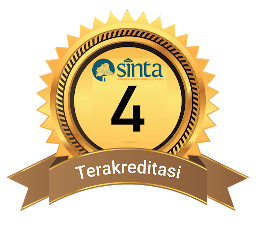Identifikasi Tingkat Literasi Kimia-SMA Mahasiswa Program Studi Pendidikan Kimia FKIP UNRAM
DOI:
10.29303/cep.v5i2.3935Published:
2022-11-30Issue:
Vol. 5 No. 2 (2022): Edisi NovemberKeywords:
Literasi kimia, hujan asam, penipisan lapisan ozon, air sadah, gas rumah kacaArticles
Downloads
How to Cite
Abstract
Penelitian ini betujuan untuk menganalisis kemampuan literasi kimia pada mahasiswa Program Studi Pendidikan Kimia, Unram. Penelitian ini menggunakan metode deskriptif. Sampel penelitian adalah mahasiswa peserta program pengalaman lapangan PPL. Instrumen penelitian yang digunakan adalah tes literasi kimia berbentuk essay yang terdiri dari aspek pengetahuan dan kompetensi kimia SMA yang tercakup pada topik hujan asam, penipisan lapisan ozon, air sadah dan efek gas rumah kaca. Hasil penelitian menunjukan bahwa: (1) kemampuan literasi mahasiswa pada topik efek rumah kaca dan penipisan lapisan ozon tergolong baik, sedangkan topik hujan asam dan air sadah tergolong cukup. (2) kemampuan literasi mahasiswa dipengaruhi oleh sumber bacaan yang digunakan, yaitu buku teks, buku pelajaran, jurnal dan internet. (3) Ditinjau dari tingkat literasi, maka kemampuan mahasiswa pada tingkat literasi nominal baik dengan nilai 80, selanjutnya literasi fungsional 67 (cukup baik), literasi konseptual 63 (cukup), dan literasi multidimensioanl 43 (kurang). Kesimpulan dari penelitian ini adalah secara umum literasi mahasiswa terhadap kimia SMA cukup baik, tetapi untuk literasi tingkat multidimensi masih kurang. Ketidakmampuan siswa dalam melakukan analisis hubungan antara konsep menyebabkan kesulitan dalam mensintesis untuk mengambil kesimpulan terkait dengan fakta yang ada dalam kehidupan.
References
Celik, S. (2014). Chemical literacy levels of science and mathematics teacher candidates. Australian Journal of Teacher Education, 39(1), 1-15.
DeBoer, G. E. (2000). Scientific literacy: Another look at its historical and contemporary meanings and its relationship to science education reform. Journal of Research in Science Teaching: The Official Journal of the National Association for Research in Science Teaching, 37(6), 582-601.
Djaen, N., Rahayu, S., Yahmin, Y., & Muntholib, M. (2021). Chemical Literacy of First Year Students on Carbon Chemistry. J-PEK (Jurnal Pembelajaran Kimia), 6(1), 41-62.
Dori, Y. J., & Avargil, S. (2015). Promoting metacognitive skills in the context of chemistry education. In Relevant Chemistry Education (pp. 119-141). Brill.
Eilks, I. (2000). Promoting Scientific and Technological Literacy: Teaching Biodiesel. Science Education International, 11(1), 16-21.
Fahmina, S. S., Indriyanti, N. Y., Setyowati, W. A. E., Masykuri, M., & Yamtinah, S. (2019, June). Dimension of Chemical Literacy and its Influence in Chemistry Learning. In Journal of Physics: Conference Series (Vol. 1233, No. 1, p. 012026). IOP Publishing.
Feierabend, T., & Eilks, I. (2011). Teaching the societal dimension of chemistry using a socio-critical and problem-oriented lesson plan based on bioethanol usage. Journal of Chemical Education, 88(9), 1250-1256.
Gilbert, J. K., & Treagust, D. F. (2009). Introduction: Macro, submicro and symbolic representations and the relationship between them: Key models in chemical education. In Multiple representations in chemical education (pp. 1-8). Springer, Dordrecht.
Hazen, R. M., & Trefil, J. S. (1991). Achieving chemical literacy. Journal of Chemical Education, 68(5), 392.
Laugksch, RC and Spargo, P. E. (1999). Scientific literacy of selected South African matriculants entering tertiary education: A baseline survey. South African journal of science, 95(10), 427-433.
Marks, R., & Eilks, I. (2009). Promoting Scientific Literacy Using a Sociocritical and Problem-Oriented Approach to Chemistry Teaching: Concept, Examples, Experiences. International Journal of Environmental and Science Education, 4(3), 231-245.
Lin, S. Y. (2009). Chemical literacy and learning sources of non-science major undergraduates on understandings of environmental issues. Chemical Education Journal (CEJ), 13(1).
Shwartz, Y., Ben-Zvi, R., & Hofstein, A. (2006a). The use of scientific literacy taxonomy for assessing the development of chemical literacy among high-school students. Chemistry education research and practice, 7(4), 203-225.
Shwartz, Y., Ben-Zvi, R., & Hofstein, A. (2006). Chemical literacy: What does this mean to scientists and school teachers?. Journal of Chemical Education, 83(10), 1557.
Author Biographies
Mutiah Mutiah, Program Studi Pendidikan Kimia, FKIP, Universitas Mataram
Jeckson Siahaan, Program Studi Pendidikan Kimia, Universitas Mataram
License
Copyright (c) 2022 Mutiah Mutiah, Jeckson Siahaan

This work is licensed under a Creative Commons Attribution-ShareAlike 4.0 International License.
Authors who publish with Chemistry Education Practice agree to the following terms:
- Authors retain copyright and grant the journal right of first publication with the work simultaneously licensed under a Creative Commons Attribution License 4.0 International License (CC-BY-SA License). This license allows authors to use all articles, data sets, graphics, and appendices in data mining applications, search engines, web sites, blogs, and other platforms by providing an appropriate reference. The journal allows the author(s) to hold the copyright without restrictions and will retain publishing rights without restrictions.
- Authors are able to enter into separate, additional contractual arrangements for the non-exclusive distribution of the journal's published version of the work (e.g., post it to an institutional repository or publish it in a book), with an acknowledgement of its initial publication in Chemistry Education Practice.
- Authors are permitted and encouraged to post their work online (e.g., in institutional repositories or on their website) prior to and during the submission process, as it can lead to productive exchanges, as well as earlier and greater citation of published work (See The Effect of Open Access).






